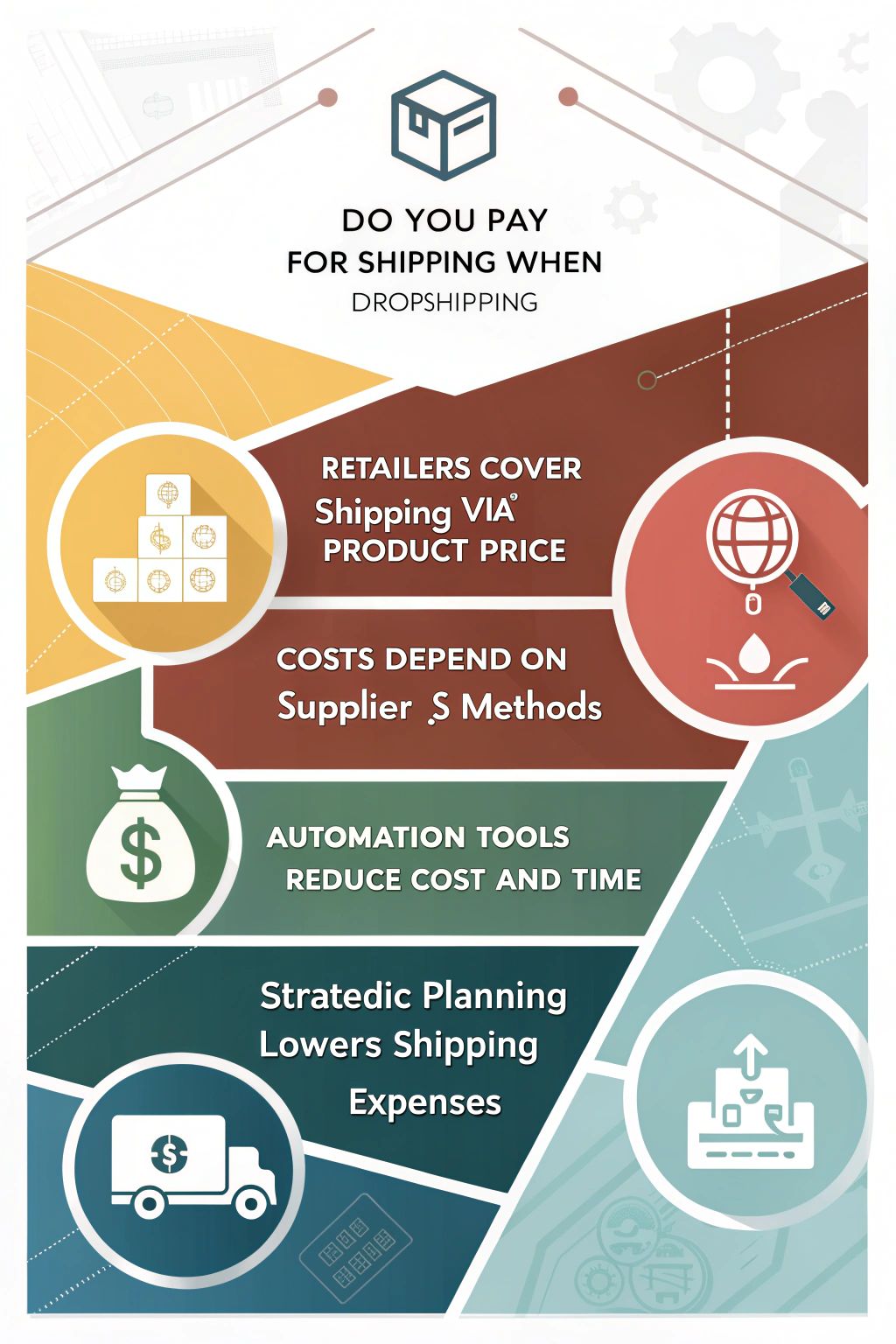Are you wondering if you need to pay for shipping when dropshipping? This is a common question many online sellers have. It can be hard to figure out who covers the shipping costs in this business model.
Dropshipping is popular because it lets stores sell products without keeping them in stock. But, there’s always the question of shipping fees.
One important fact about dropshipping is that SmokeDrop offers quality smoke products with fast shipping options. This helps sellers make more sales and attract customers. Our post will guide you through who pays for shipping, how costs are decided, and ways to handle these expenses.
Keep reading to learn more!
Key Takeaways
- Retailers usually pay for shipping in dropshipping by adding the cost to the product price.
- SmokeDrop offers quick shipping and helps manage costs with tools for order updates and tracking.
- Shipping costs vary depending on how suppliers ship items and can affect customer satisfaction.
- Using automated services like SmokeDrop saves time and reduces operational costs for retailers.
- Effective planning and using strategies like automatic order fulfillment can lower shipping expenses.

Who Pays for Shipping in Dropshipping?

Moving from the basics, it’s key to know who foots the bill for shipping in dropshipping. The retailer usually covers these costs. They wrap it into the product price customers see.
SmokeDrop plays a big part here, offering quick shipping options that make buyers happy. It also has tools that make order processes and updates easier for store owners.
Certain things like what you’re selling and who you’re buying from can change shipping prices on SmokeDrop. Their approach to buying in bulk without needing to order a lot helps manage these costs well.
Each package sent out comes with a tracking number too, making sure both buyer and seller keep tabs on where things are, clear as day.
Understanding How Shipping Costs Are Determined
Shipping costs in dropshipping can change a lot. They depend on the supplier and how they send items. Some suppliers use fast methods to ship, which makes things arrive quickly but might cost more.
Others go for cheaper options that take longer. The choice of shipping method can affect how much customers are willing to pay and how happy they are with their purchase.
Retailers often pass these shipping costs to the customer. This means they don’t have to pay for shipping themselves upfront. Tools like SmokeDrop help by giving updates on where the package is, which customers like.
Also, syncing inventory accurately tells retailers about product availability, helping them set the right shipping costs without losing money or charging too much.
Strategies to Manage Shipping Expenses in Dropshipping
Effective shipping strategies can save dropshippers both time and money. Here are some ideas to manage shipping expenses.
- Utilize automated dropshipping services like SmokeDrop. These tools help save time and lower operational costs.
- Implement automatic order fulfillment. This ensures quick processing of orders and minimizes delays in shipping.
- Simplify product importation. Doing this cuts down on setup time and lowers costs linked to managing inventory.
- Leverage apps that integrate many products. This creates a smoother shipping management process for dropshippers.
- Sync tracking numbers across suppliers and retailers. This improves transparency in the shipping process, making it easier for everyone involved.
- Take advantage of wholesale purchasing options with no minimum order requirements. This gives flexibility in managing shipping costs effectively.
- Use advanced search filters to manage inventory efficiently. These filters help optimize shipping logistics, allowing for better decision-making.
- Focus on reducing operational costs through careful planning and execution. Good planning leads to lower overall expenses in the long run.
These strategies can greatly enhance efficiency and profitability in the dropshipping business model. Next, let’s discuss who pays for shipping in dropshipping.
Conclusion
Shipping costs can be tricky in dropshipping. Knowing who pays for shipping helps online sellers plan better. Smart strategies help manage these expenses effectively. These tips can lead to lower costs and happier customers.
Every seller should consider checking tools like the SmokeDrop Shopify App for more guidance and support. Implementing these ideas could change their business for the better! Feel inspired to take action today, because every small step counts toward success!
FAQs
1. Do you pay for shipping when dropshipping?
Well, it depends! When you dropship, the supplier usually handles shipping. They often charge you for this service, so yes, you’ll need to cover those costs—unless you’ve worked out a deal where they offer free shipping.
2. Can customers expect free shipping on dropshipping orders?
Customers love free shipping—it’s like finding an extra fry at the bottom of the bag! However, as a dropshipper, it’s up to you if you want to absorb that cost or pass it along to your customers. Just keep in mind that offering free shipping can help boost sales.
3. How do I decide who pays for shipping in my dropshipping business?
You’ve got options here! You can choose to include the cost of shipping in your product prices or add a separate fee at checkout. Think about what works best for your brand and what will make your customers happiest (because happy customers come back!).
4. What if my supplier has different shipping rates?
Ahh, that’s a common puzzle in dropshipping! If suppliers have varying rates, you’ll need to figure out how much each one charges and set clear pricing on your end. It might take some math—but hey, think of it as getting good at budgeting while running your business!



